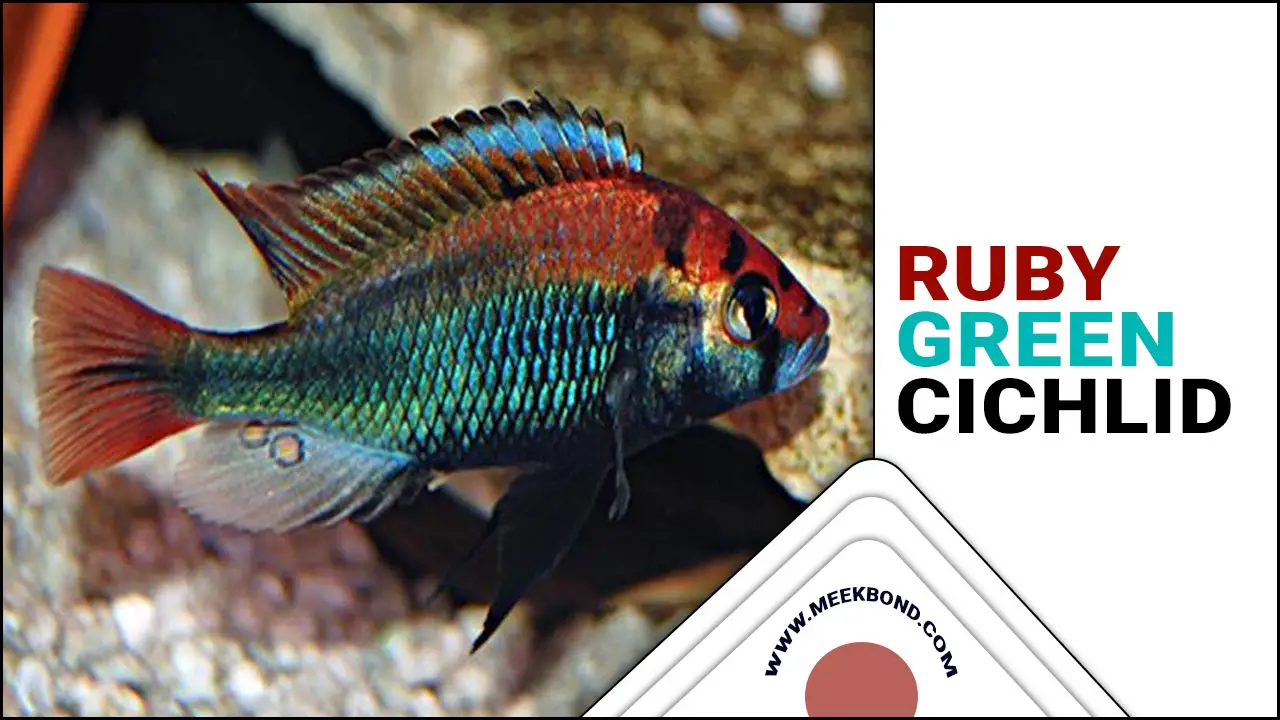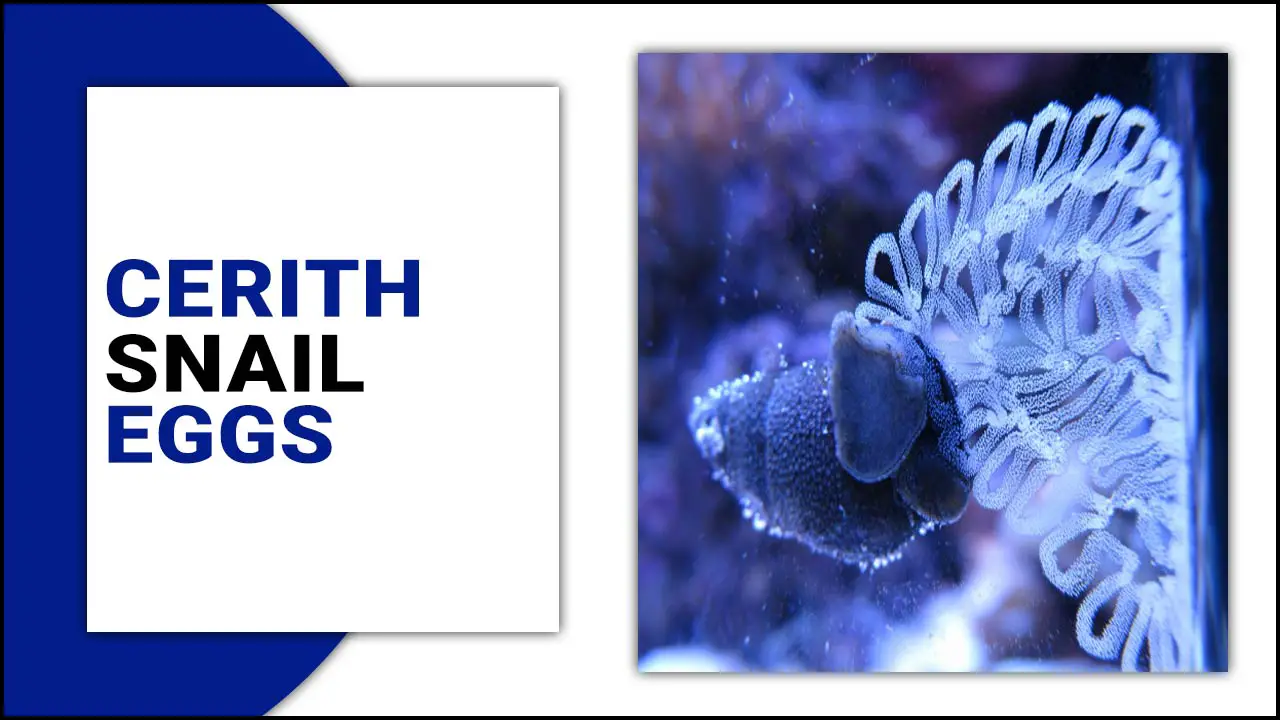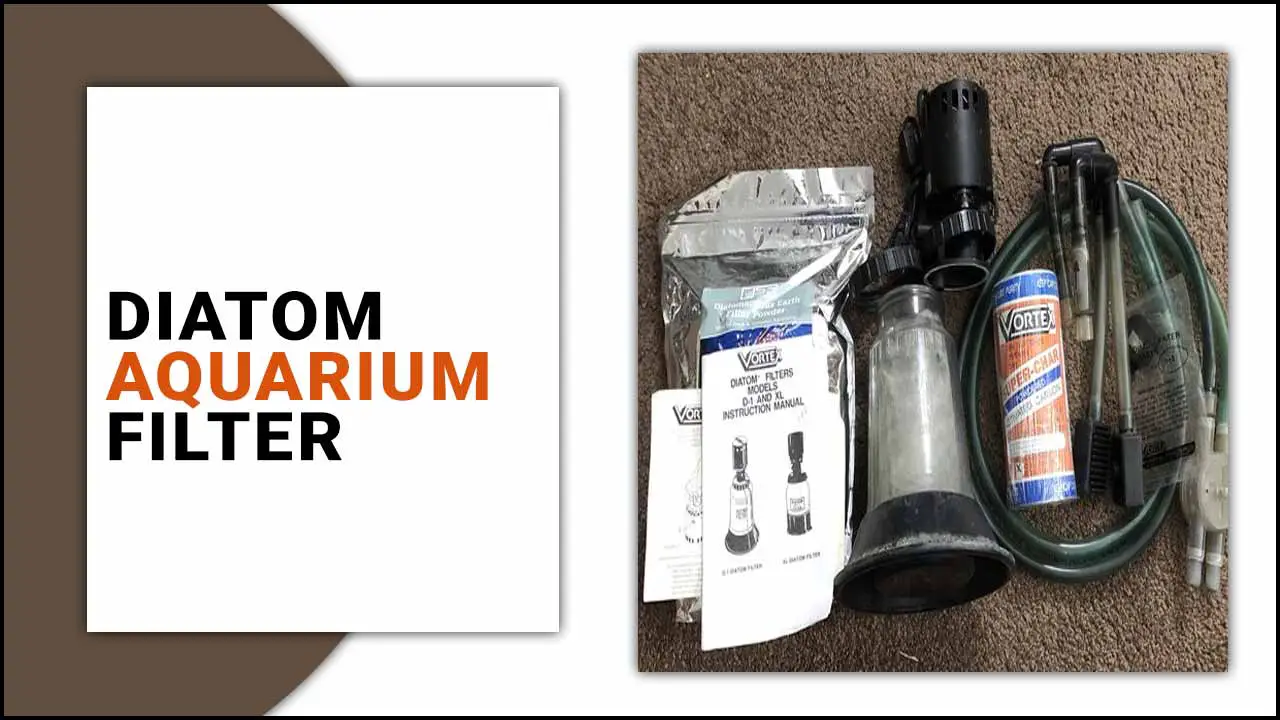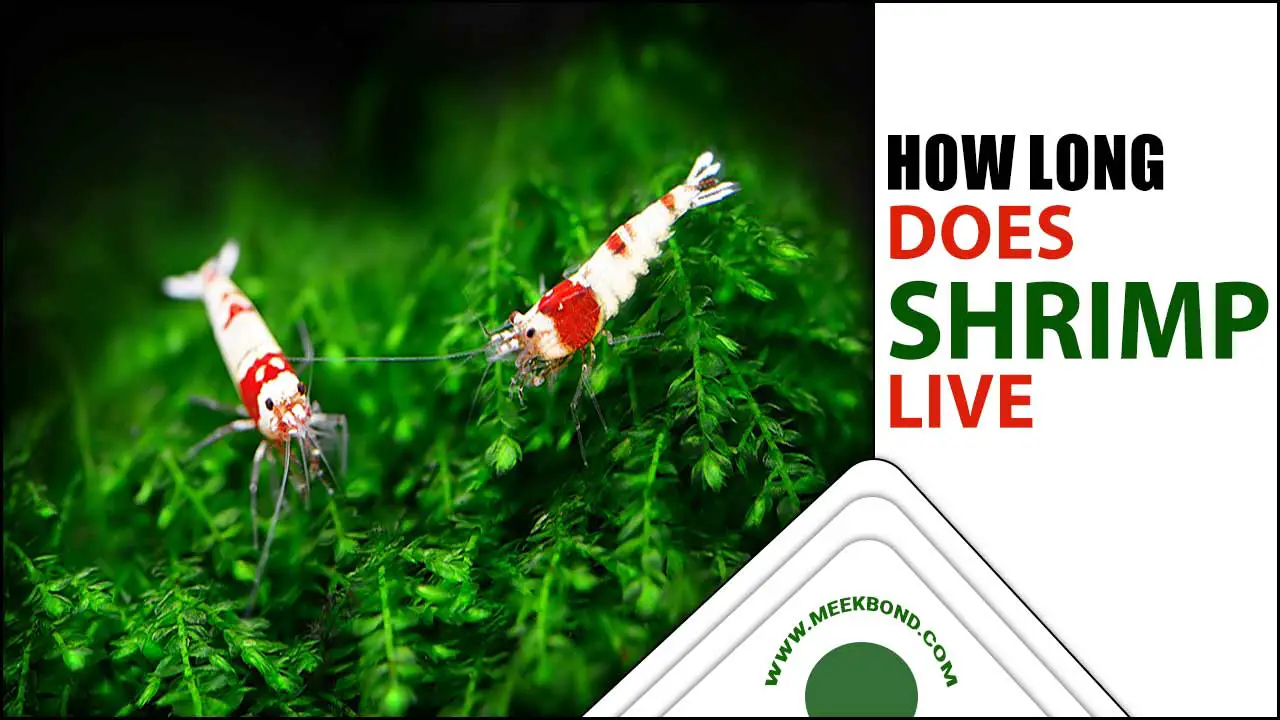The African Dwarf Frog is a popular aquatic pet for many beginners. These small, fully aquatic frogs are known for their unique appearance and low-maintenance upkeep, making them perfect for those just starting out in the world of amphibian ownership.
However, it’s important to note that it’s best to get a pair of frogs if you plan on breeding them. Pregnant African-Dwarf Frogs, we will discuss everything you need to know about caring for a pregnant African dwarf frog.
You’ll learn about the signs of pregnancy, what to feed your pregnant frog, and how to create a suitable environment for her to lay eggs and care for her tadpoles. We’ll also cover the basics of breeding, including identifying male and female frogs, encouraging breeding, and caring for the eggs and tadpoles once they hatch.
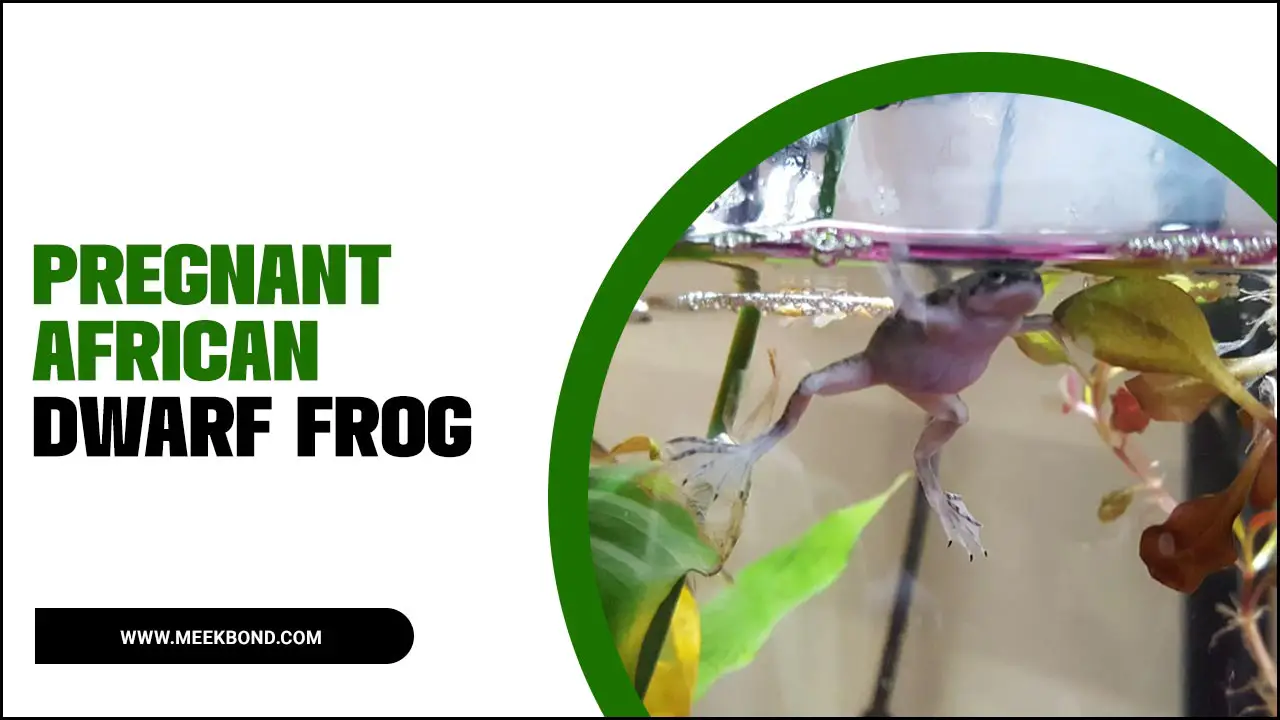
Pregnant African Dwarf Frog- What You Should Know
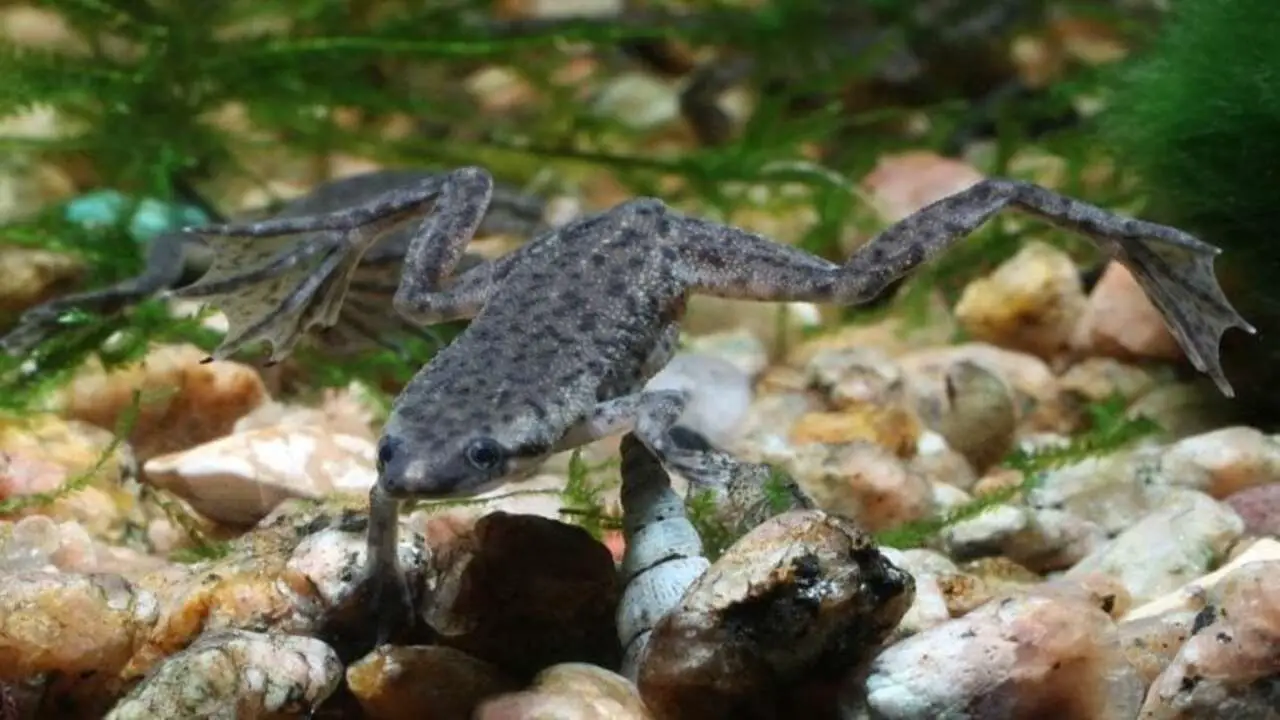
Pregnant African dwarf frog is a fascinating process that many owners of these aquatic pets may encounter in your aquarium. However, it’s important to note that African Dwarf Frogs do not actually get pregnant in the same way as mammals. Instead, female frogs will lay eggs, fertilized by the male frogs. The eggs are typically attached to plants or other surfaces in the aquarium and will hatch into tadpoles after a few days.
Owners must provide a suitable environment for the eggs and tadpoles to thrive, including proper water conditions and adequate nutrition. Additionally, it’s worth mentioning that breeding African Dwarf Frogs requires careful planning and consideration, as it can be challenging to care for many tadpoles if they all successfully hatch. Understanding the basics of African Dwarf Frog reproduction can help owners provide optimal care for their beloved aquatic companions.
Identifying Pregnant African-Dwarf Frogs
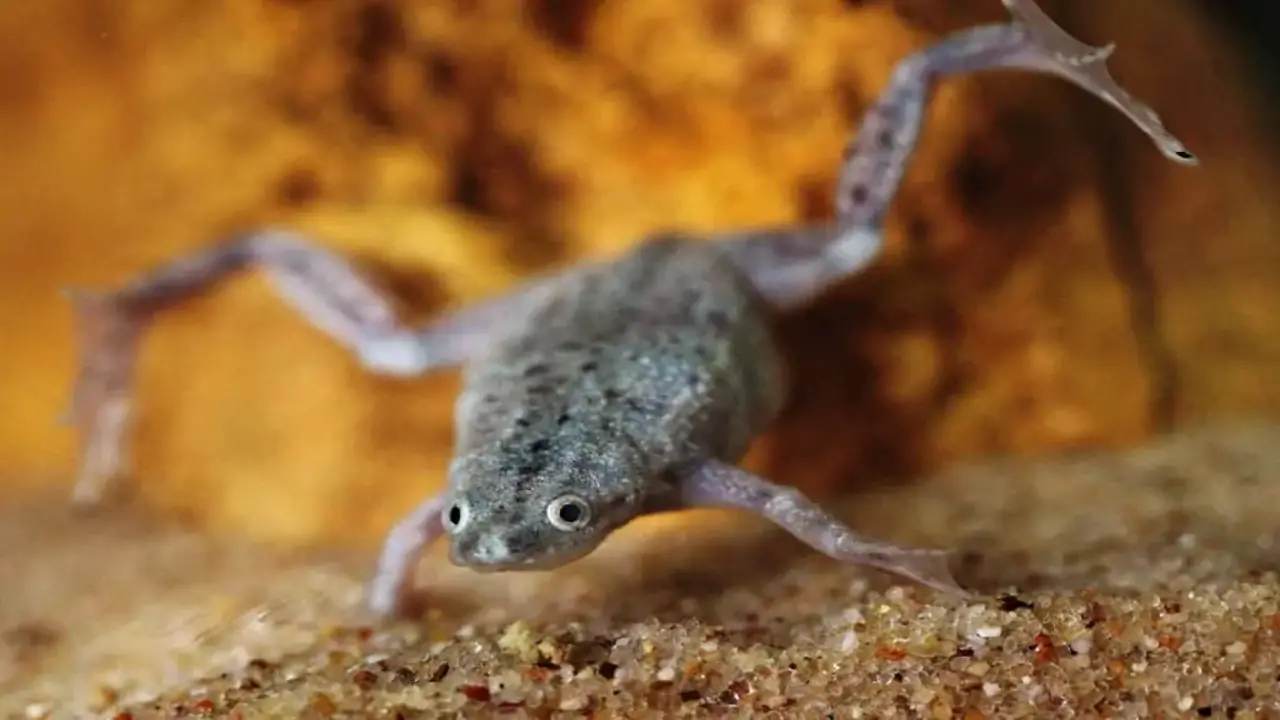
When trying to identify pregnant -African dwarf frogs, several key factors must be considered. One of the first things to look for is changes in the frog’s appearance. Pregnant frogs tend to have a rounder belly and a wider girth. Additionally, you may notice behavioral changes such as decreased activity and spending more time floating near the surface. Checking for eggs is another important step in identifying pregnancy.
Female frogs typically lay their eggs in a separate container or on plants within the tank. To ensure the health and well-being of the pregnant frog, it’s crucial to provide proper care, including a clean and spacious tank, a healthy diet, and appropriate water conditions.
Lastly, if you plan on breeding your frogs, separating the males and females during pregnancy is best to prevent stress and aggression. By closely observing these indicators, you can easily identify and care for pregnant-African dwarf frogs.
Physical Changes To Look For
During pregnancy, a female African Dwarf Frog will have a visibly swollen belly. These pregnant frogs may become less active and spend more time floating near the water’s surface. Their appetite can vary; some lose interest in food while others eat more frequently. Additionally, pregnant-African Dwarf Frogs may grow slightly larger than their non-pregnant counterparts. Small eggs can be seen inside the frog’s belly as the pregnancy progresses.
Size
African Dwarf Frogs are known for their small size, growing up to 2.5 inches in length. Regarding their tank size, it’s essential to provide an appropriate habitat. For a single African Dwarf Frog, a tank of at least 5 gallons is recommended. Overcrowding can lead to stress and poor health, so keeping a close eye on the number of frogs in the tank is important. Ensuring a suitable tank size can create a comfortable environment for your African Dwarf Frogs to thrive in captivity.
Fatness
During pregnancy, it is crucial to monitor the weight of your African dwarf frog to ensure it does not become overweight. To stay healthy, these unique pets require a varied diet, including frozen or live foods. Additionally, pregnant frogs may need calcium and vitamin supplements to support the development of their offspring.
Adequate tank space and water quality are also important for the health of the pregnant frog and its offspring. Keeping a close eye on their weight and providing proper nutrition is the best way to ensure a healthy pregnancy.
Skin & Coloration
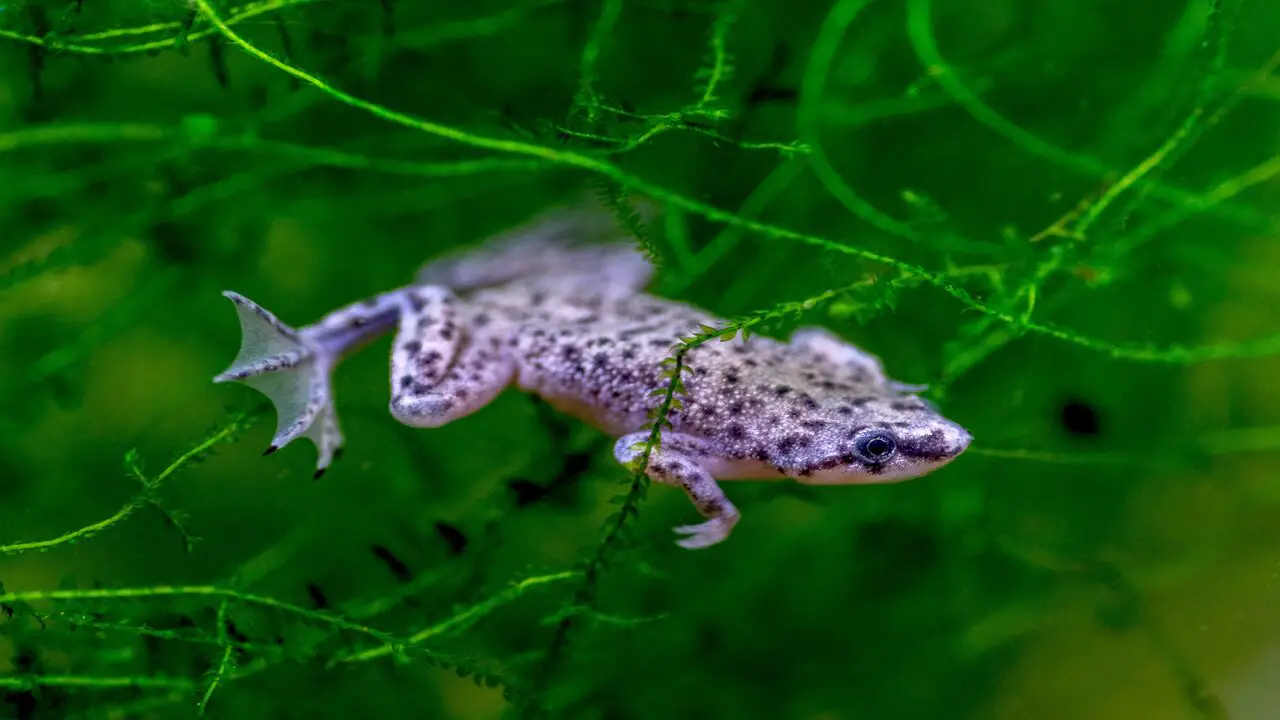
African Dwarf Frogs display a smooth skin texture in colors like grey, brown, green, and albino. The coloration of their skin can serve as an indicator of their health and mood, with darker shades suggesting stress or illness.
The frog’s skin also plays a vital role in respiration and water absorption. Ensuring proper water quality and temperature is crucial for maintaining healthy skin and vibrant colouration in these frogs. It is advised to minimize handling to avoid transferring oils and chemicals that may harm their delicate skin.
Mating Behavior Of African Dwarf Frogs
Male and female African dwarf frogs engage in amplexus during mating, coming together in a unique embrace. This ritual takes place underwater, typically near the substrate of the tank. After a successful mating, female African dwarf frogs may lay their eggs in a clutch while the male fertilizes them externally.
It’s important to note that water parameters, such as temperature and pH, can greatly impact the success of mating. Providing optimal conditions for these frogs is essential for a good chance of successful mating in captivity. A gallon tank with a close eye on water quality can help prevent bacterial infections. The only thing to remember is that African dwarf frogs are amphibians, not mammals, so their mating behavior differs.
Recognizing Mating Conditions
Male African dwarf frogs have a good chance of attracting females through their mating calls. To increase the chances of mating behavior, it is important to maintain a well-maintained aquarium. Providing suitable substrates, such as gravel, can also encourage mating behavior.
The optimal temperature for mating is around 75 to 80 degrees Fahrenheit. Additionally, creating hiding spots like plants or caves can stimulate mating behavior. Keeping a close eye on these conditions and ensuring an ideal environment can increase the likelihood of successful mating.
How To Facilitate Breeding In Captivity
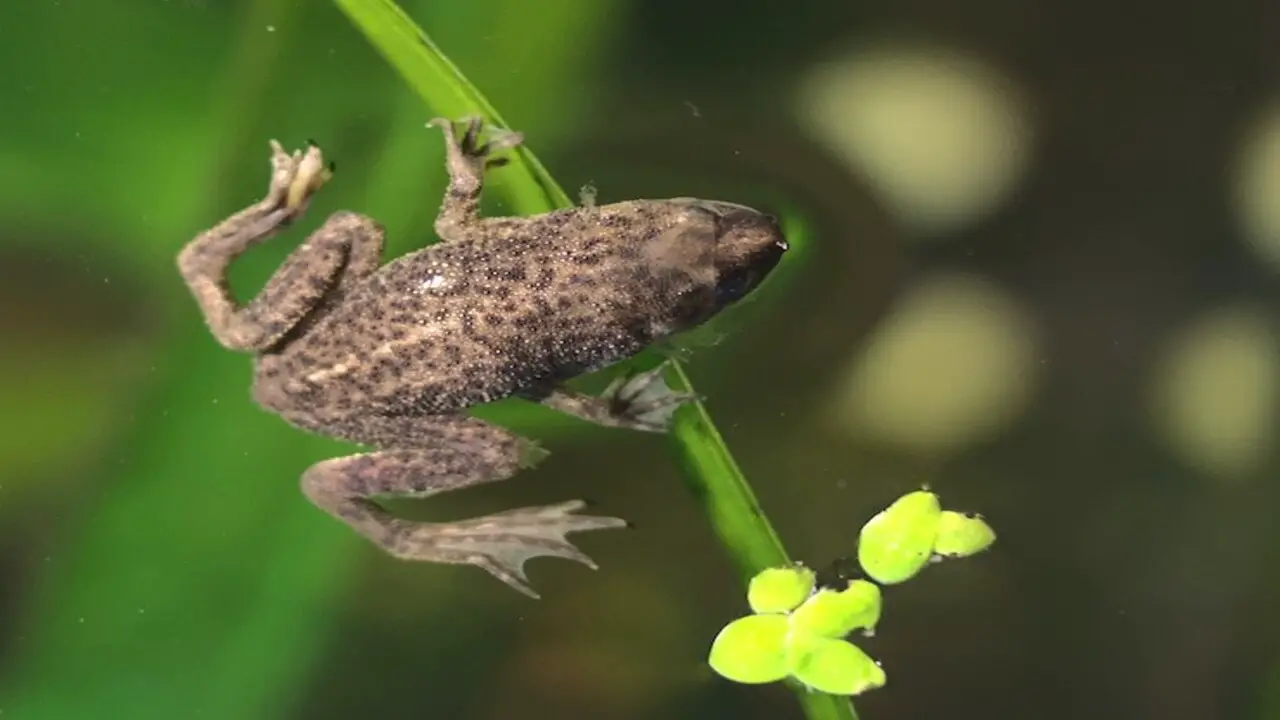
Breeding African dwarf frogs in captivity can be a rewarding experience for amphibian enthusiasts. Remember that breeding African dwarf frogs can be complex, requiring patience and careful attention to detail. It’s important to research further or consult with experienced breeders for specific guidance tailored to your situation. Here are some tips on how to facilitate breeding in captivity:
- Provide the right environment: Create a suitable habitat for your frogs by setting up a spacious tank with clean, dechlorinated water. Maintain the temperature between 75-80°F and provide hiding spots such as plants or caves.
- Feed a balanced diet: Offer a variety of nutritious foods to ensure optimal health and reproductive success. Feeding them high-quality commercial frog pellets, live or frozen foods like bloodworms, brine shrimp, or daphnia will help stimulate breeding behavior.
- Monitor water conditions: Regularly test the water parameters such as pH, ammonia, nitrite, and nitrate levels to maintain a healthy environment for the frogs. Keep the water clean by performing regular partial water changes.
- Mimic natural breeding conditions: Introduce a seasonal temperature change by lowering the temperature slightly and gradually increasing it over several weeks to simulate the transition from winter to spring.
- Observe mating behaviors: Male frogs often call out to attract females with their distinct vocalizations. Females may respond by showing receptive behavior, such as following the male or vibrating their bodies. Once mating occurs, eggs will be laid and need to be protected from potential predators.
Is My African Dwarf Frog Pregnant Or Bloated?
If you notice that your African Dwarf Frog appears to have a swollen belly, it can be difficult to determine whether it is pregnant or simply bloated. One way to distinguish between the two is by observing the behavior of your frog. Pregnant frogs may exhibit nesting behaviors, such as collecting and placing eggs on plants or other surfaces in the tank.
Additionally, pregnant frogs may become more territorial or aggressive towards other frogs. On the other hand, if your frog is bloated, it may appear lethargic and have difficulty swimming or moving around. It is important to monitor the health and behavior of your frog closely and consult with a veterinarian if you are unsure about its condition.
Distinguishing Between Pregnancy And Bloating
When differentiating between pregnancy and bloating in African dwarf frogs, there are a few key factors to consider. One way to determine whether your frog is pregnant or experiencing bloating is to observe changes in appetite and behavior. Pregnant frogs may show a decreased appetite before laying eggs, while other symptoms like oedema or dropsy typically accompany bloating.
Additionally, female African dwarf frogs exhibit specific behavior before laying eggs, such as spending time near the surface or floating. Another important aspect is monitoring water parameters, as poor tank conditions can cause bloating.
Changing Water & Temperature Conditions
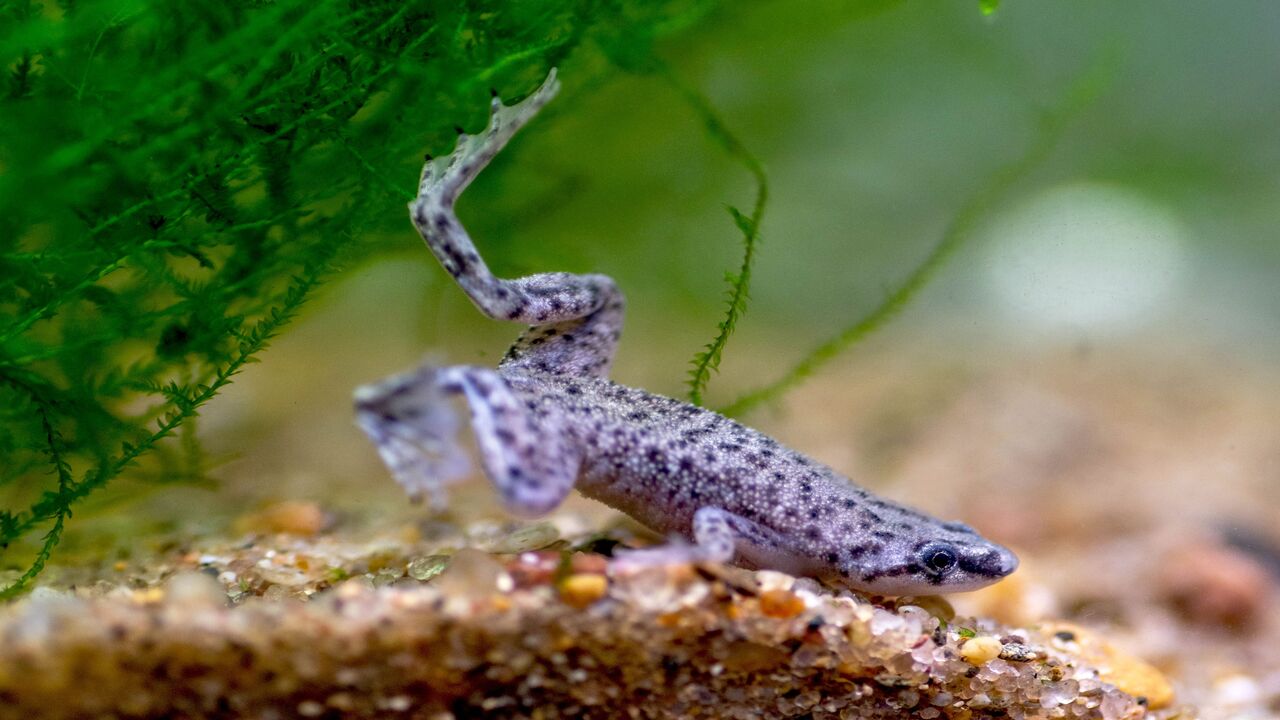
To ensure the well-being of African dwarf frogs, it is crucial to maintain a consistent water temperature between 72-78°F. Use a water conditioner to eliminate harmful chemicals and create a safe environment for the frogs. Regular water changes of 25-50% of the total volume help maintain good water quality. Consider using a filter to keep the water clean and healthy. Avoid sudden temperature changes or add cold water to prevent stress and potential harm to the frogs.
Hatching Time For African Dwarf Frog Eggs
African Dwarf Frog eggs usually hatch within 3-7 days after being laid, so patience is key. It’s important to provide the right conditions for hatching and closely monitor the eggs for any signs of movement or development. Avoid disturbing the eggs during this process. Once the eggs hatch, ensure proper care and nutrition for the tadpoles to support their growth. Remember, a good chance of success is creating the best environment for these fascinating creatures.
Post-Mating Care For African Dwarf Frogs
Providing suitable conditions for egg laying is crucial after mating. Female African dwarf frogs may require a separate tank to lay their eggs. Maintaining optimal water quality and temperature ensures successful egg development. Keeping a close eye on the eggs and protecting them from predators is essential. After the eggs are laid, it is recommended to remove the male African dwarf frog to prevent cannibalism.
This will allow the eggs to hatch and develop without any disturbances. Adding a gallon tank in captivity is the best way to create a safe environment for the eggs. It is also important to keep the water condition at its best to prevent bacterial infection. Monitoring the eggs closely and ensuring their well-being is the only thing that needs to be done by you.
Remember, just like mammals, African Dwarf Frogs also lay eggs. So, caring for the eggs is an easy way to ensure their survival. If you have catfish or other tank mates, ensure they don’t disturb the eggs by placing them somewhere at the top of the tank.
Providing Optimal Conditions For Egg Laying
To ensure successful egg laying, it’s important to create a suitable substrate, such as moss or plants, where the female can securely attach her eggs. Proper filtration and regularly changing the water help maintain optimal water quality for egg development.
It’s also crucial to keep the temperature stable between 75 to 80 degrees Fahrenheit, as sudden fluctuations can be detrimental. Additionally, gentle handling and minimal disturbance in the tank reduces stress on the female and her eggs.
Ensuring Healthy Development Of Tadpoles
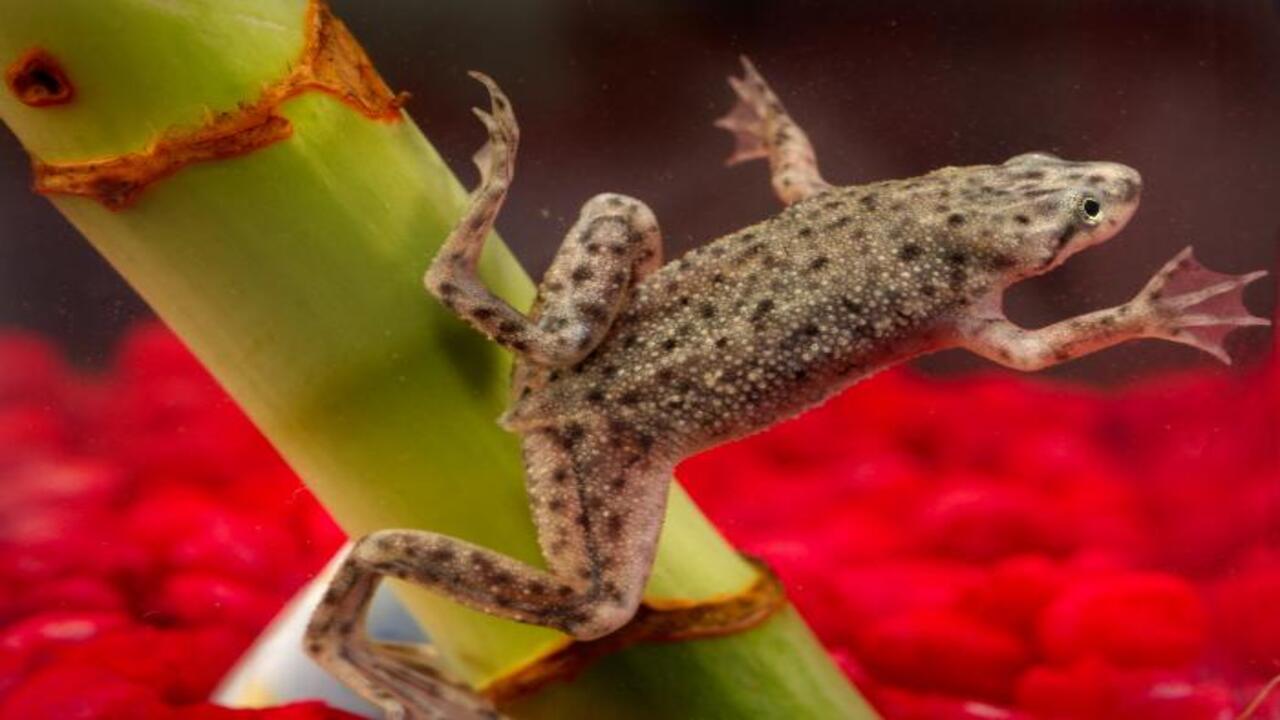
To ensure the healthy development of tadpoles, it is important to monitor water parameters such as temperature and pH. By maintaining optimal conditions, you can support their growth and well-being. Additionally, providing a varied diet consisting of brine shrimp, bloodworms, and other appropriate food sources is essential for their nutrition.
Mimicking their natural habitat by incorporating hiding spots and vegetation in the tadpole tank will help create a conducive environment. Regular cleaning and proper filtration are necessary to prevent any water quality issues. As the tadpoles grow, gradually introducing solid food will aid in their transition into adult frogs.
Conclusion
To sum up, caring for pregnant African Dwarf Frogs requires attention to detail and a nurturing environment. By properly identifying the signs of pregnancy, such as changes in size, fatness, and skin coloration, you can provide the necessary care for your frogs. Understanding the mating behavior of African Dwarf Frogs and creating optimal conditions for breeding in captivity will help ensure successful reproduction.
Differentiating between pregnancy and bloating is also essential for proper care. Additionally, maintaining appropriate water and temperature conditions and providing post-mating care will contribute to the healthy development of tadpoles. By following these guidelines, you can provide the best care for your pregnant-African Dwarf Frogs and ensure the overall well-being of your aquatic companions.
Frequently Asked Questions
How Do I Know If My Frog Is Pregnant?
To determine if your African dwarf frog is pregnant, look for a swollen abdomen and visible eggs through the skin. Differentiating between male and female frogs can be challenging. Changes in behavior, such as increased reclusiveness, may also indicate pregnancy.
Why Does My African Dwarf Frog Look Bloated?
African dwarf frogs may appear bloated due to overfeeding or constipation. Ensure a balanced diet for your frog and avoid excessive feeding. You can add a small amount of Epsom salt to their water to relieve constipation. If bloating persists or is accompanied by other symptoms, it’s best to consult a veterinarian specialising in amphibians.
How Do African Dwarf Frogs Give Birth?
African Dwarf Frogs do not give birth but instead lay eggs. The female frog releases her eggs, which are then fertilized externally by the male. Depending on the water temperature and conditions, the eggs will hatch in about 2-4 days. Removing adult frogs from the tank after the eggs are laid is important to prevent them from eating them.
What Is The Mating Behavior Of The African Dwarf Frog?
African dwarf frogs have interesting mating behavior. Male frogs use vocalizations and courtship behavior to attract females. The female lays eggs on aquatic plants, fertilized by the male. He then guards the eggs until they hatch into tadpoles. Breeding can occur year-round but may require specific environmental conditions.
How To Tell If My African Dwarf Frog Is Pregnant?
To determine if your African Dwarf Frog is pregnant, look for a visibly rounder belly and possibly a darker coloration on the belly. Males may show increased interest in the female during this time. Providing proper care and diet will ensure healthy development and hatching of eggs.

Aquarium passion is all about connecting with the aquatic life and providing education to the public on the importance of these creatures. We showcase a wide variety of marine life through our exhibits as well as working with schools to provide unique learning opportunities for students of all ages.

